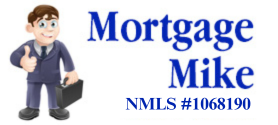Home Equity Crucial to Health Care Planning as Costs Rise 4% Each Year
As health care costs are expected to keep rising, reverse mortgages and other home-equity tapping solutions can play a vital part in planning for health expenses for seniors.
HealthView recently released its 2018 Retirement Health Care Costs Data Report, which showed that retirees can expect their health care costs to rise annually by about 4.22% for the foreseeable future. The inflation slowed from last year, when HealthView projected inflation at 5.47%.
Decreases in prescription drug costs — amid a migration toward generic options over name-brand drugs and the availability of more plentiful rebates from pharmaceutical manufacturers — is cited as one of the reasons for the slowdown.
Despite the slowdowns, even at current growth rates, a healthy 65-year-old couple who retires this year and lives into their late 80s can expect to pay $363,946 in retirement healthcare costs, not including any longterm care.
“This includes Medicare Part B premiums, Medicare Part D premiums, supplemental insurance (Plan G), dental insurance, co-pays and out-of-pocket costs for medical care, prescriptions, dental, hearing, and vision,” HealthView, a data and analytics firm geared toward helping seniors meet growing health care costs, noted in a statement announcing the results of their research. “For Medicare, supplemental insurance, and dental premiums alone, healthcare expenses are expected to be $281,847.”
Earlier this year, the journal Health Affairs projected that total national health care spending — driven by the aging senior population — will outpace the growth of the U.S. gross domestic product by 2026, at which point health care will account for 19.7% of the nation’s entire economy.
Those gaudy figures come at a time when seniors increasingly face a future without defined benefit pensions and have fallen behind on their 401(k) contributions, making health care concerns — including aging in place upgrades and simple medical bills — a key potential use for reverse mortgages as America ages.
Michael Daley, the product marketing manager for HealthView Services and Healthy Capital, told RMD that home wealth is a crucial part of planning for in-retirement health expenses.
“The fact that much of one’s wealth may be tied into their home leads directly to two solutions often implemented to cover health costs: equity loans and reverse mortgages,” Daley told RMD in an e-mail. “In each case, money can be taken out to fund health care expenses, and most notably, those additional funds do not count as Modified Adjusted Gross Income (MAGI).”
MAGI is the measure that Medicare uses to determine an income range. Medicare determines surcharges for Medicare Parts B and D based on income, and these surcharges can be extremely expensive, Daley said. Because reverse mortgage income would not count for this, home equity wealth becomes “all the more valuable in retirement.”
For instance, seniors with income of $85,000 or less don’t pay any surcharge for those Medicare benefits, while the next-highest bracket — $85,001 to $107,000 — are hit with a 36% fee. That number goes all the way up to 220% for people with incomes of $500,001 or more.
In addition, Daley noted that the income brackets have not been adjusted for inflation since 2007, rendering them stagnant for more than a decade — aside from the lowering of the thresholds for several of the middle-income brackets, as well as the addition of the sixth bracket.
“A loan against your home equity would act much in the same way a loan against life insurance, which serves the same two purposes: generates income to fund costs and does not increase MAGI,” he said.
Article by reversemortgagedaily.com


